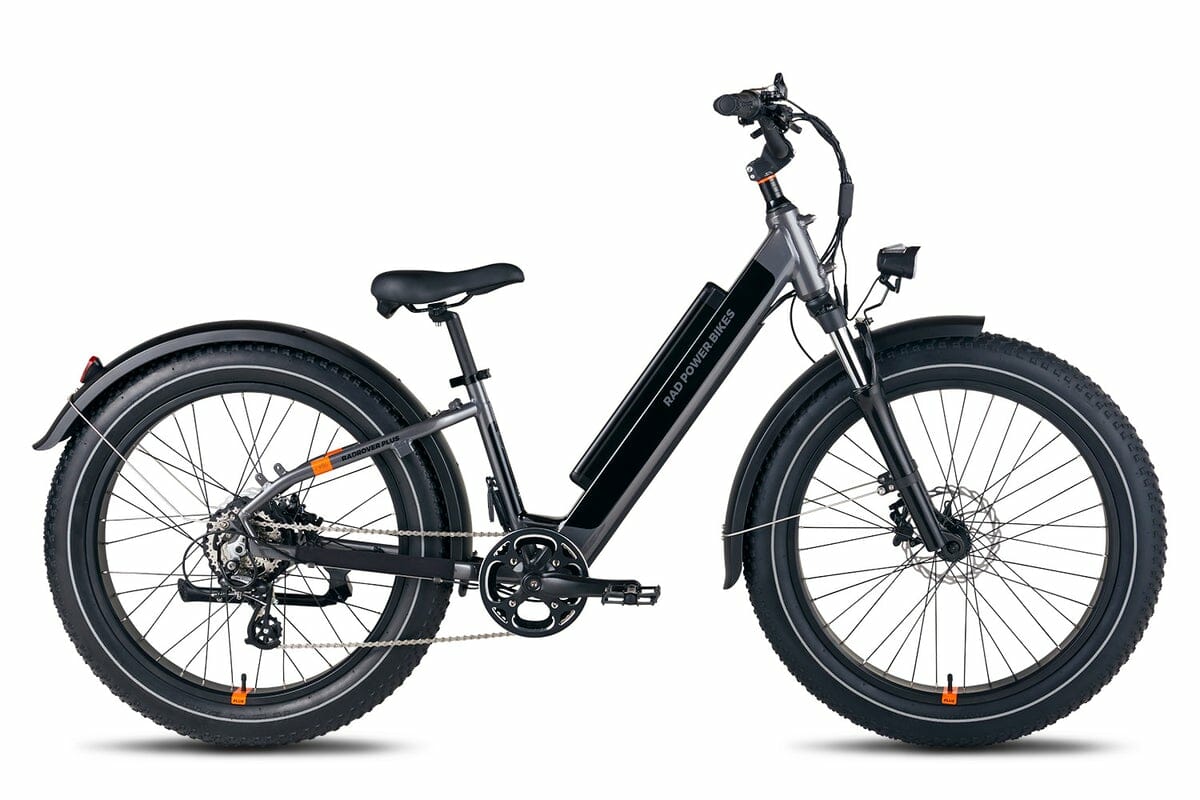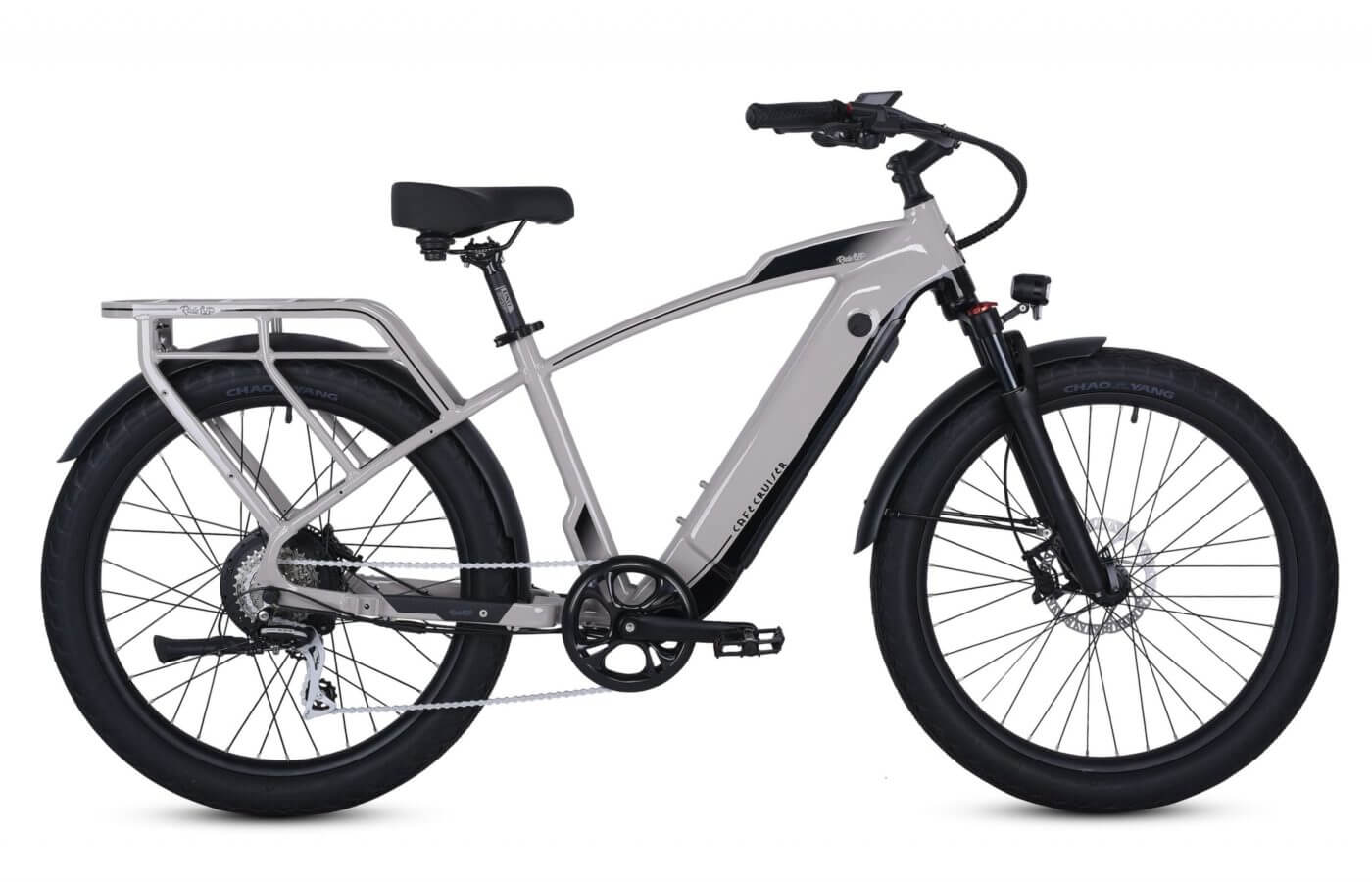
Which is better for an electric bike: a mid-drive or a rear-hub motor? The answer isn’t so simple. Both have their pros and cons, and the right choice for you depends on your needs and preferences. Let’s take a closer look at each type of motor to see which might be right for you.
Why you should trust us
I was an idiot who didn’t care much for a “normal bike” but somehow got caught up reviewing 20+ electric bikes in the process. I wouldn’t call myself an expert, but I’ve got a bit of experience with many different kinds and types of electric bikes.
Electric bikes are becoming more and more popular, as people discover the joys and benefits of biking without all the sweat and effort. But with so many different types of electric bikes on the market, it can be tough to decide which one is right for you. Don’t worry, I’ve done the work for you.
If you’re thinking about electric bikes, read my guide to electric bikes.
Quick Overview of Rear Hub and Mid Drive
When it comes to choosing an electric bike, there are two main options: Mid-drive or rear-hub. Both have their own set of pros and cons, which we will go over in this post.
Mid-drive motors sit where the cranks (aka pedals) are located, like this Quietkat Apex (read our QuietKat Apex Review):
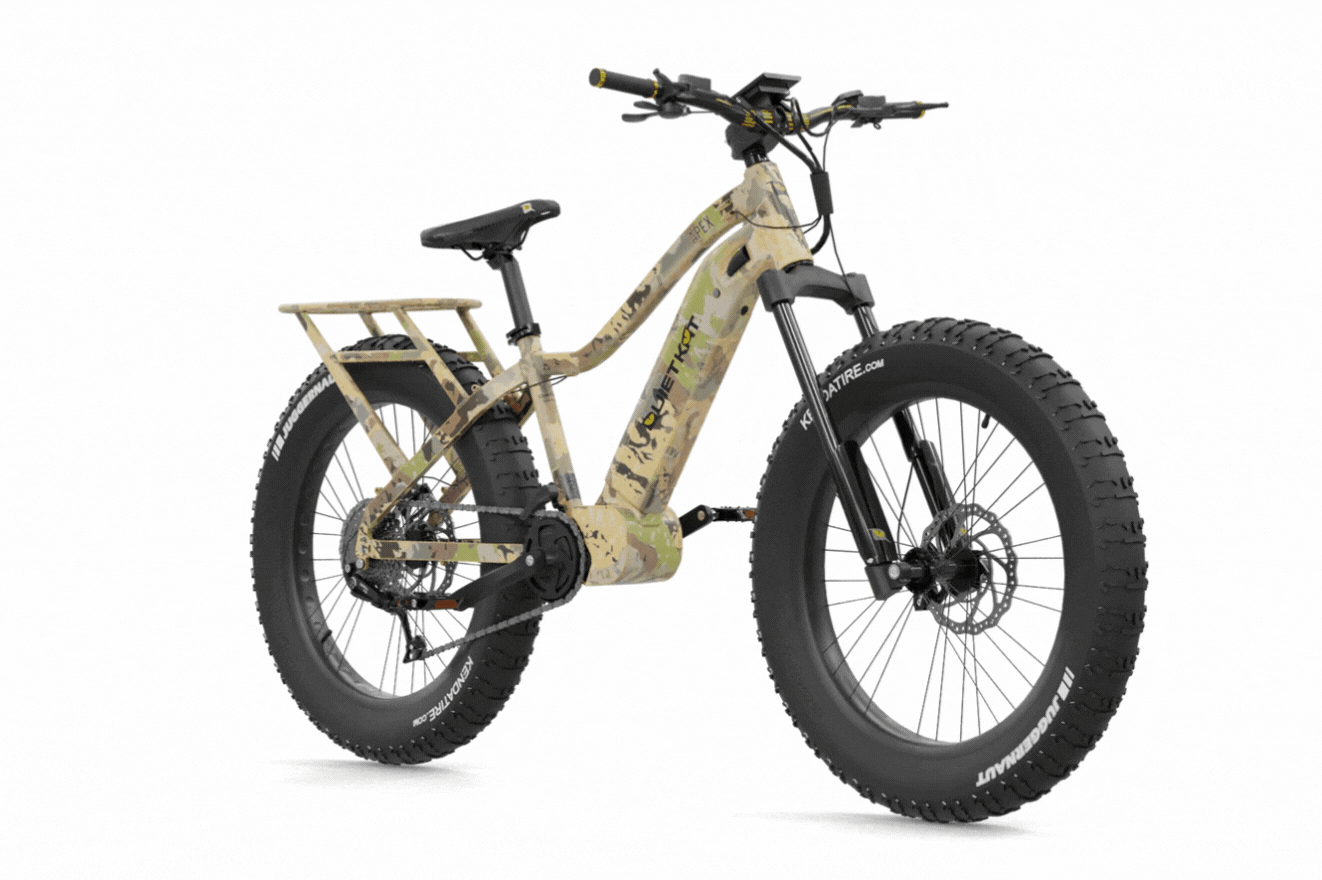
Rear Hub Motors are the most common and have a motor that sits in the back of the rear tire, like the RadRover 6 Plus (read our RadRover 6 Plus Review):
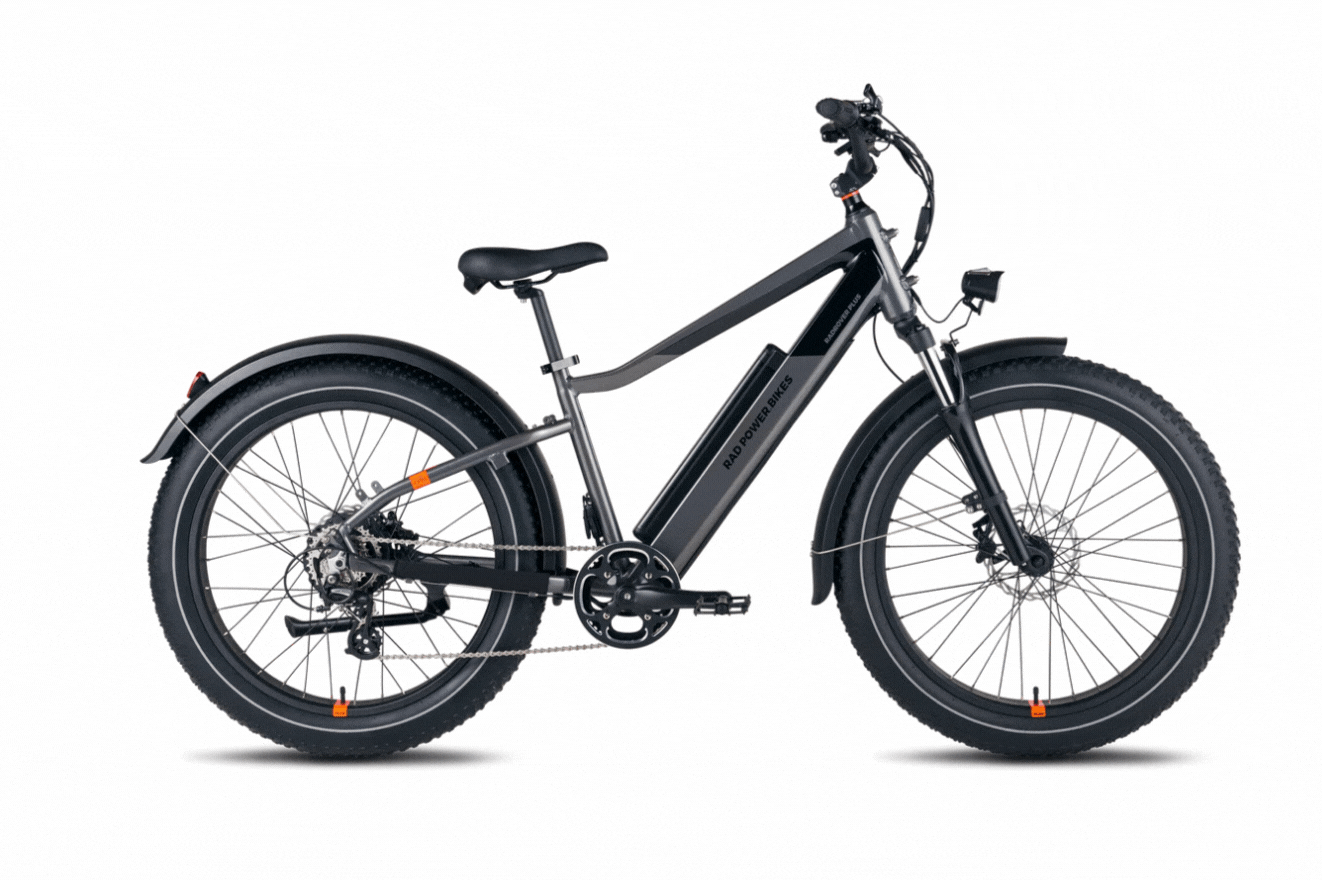
Is it a motor… or an engine?
Motors and engines are both types of machinery that convert energy into mechanical force. The biggest difference between the two is that motors run on electricity and engines run on combustion. Engines work by converting various forms of fuel, such as petrol or diesel, into mechanical force. This force is then used to power things like cars and boats.
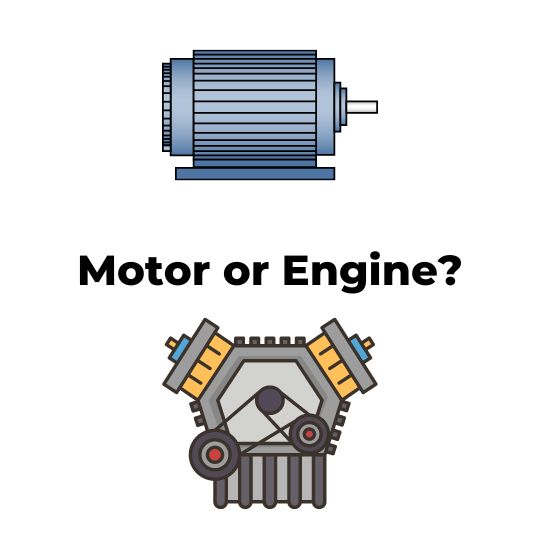
On the other hand, motors transform electrical energy into mechanical energy. This energy is then used to power things like electric cars, trains and BIKES! So, the next time someone asks you whether you have a motor or an engine in your bike, you’ll know exactly what they’re talking about! (And if they have a problem with it, they can take it up with Sir Isaac Newton – he’s the one who came up with the concept of conversion in the first place!)
The easy guide to Mid-Drive vs. Rear-Hub Motors
Mid Drive Motors
Best for: extreme offroading + bicycle purists
Pros: Last longer, more natural pedaling experience
Cons: More expensive, not as fun
Rear Hub Motors
Best for: casual riders
Pros: Cheaper, more fun to ride, almost always have a throttle.
Cons: Don’t last as long, don’t feel as natural
Mid-drive motors offer a more natural feel when pedaling, and they last longer than rear-hub motors. However, they are more expensive than rear-hub motors. Rear-hub motors are cheaper and more fun, but they don’t last as long as mid-drive motors. Ultimately, the decision comes down to one simple question: how are you going to use the eBike?
Neither one is better or worse than the other, but they both have their pros and cons. Let’s dive deep into them.
Rear Hub Motor: The Good Stuff
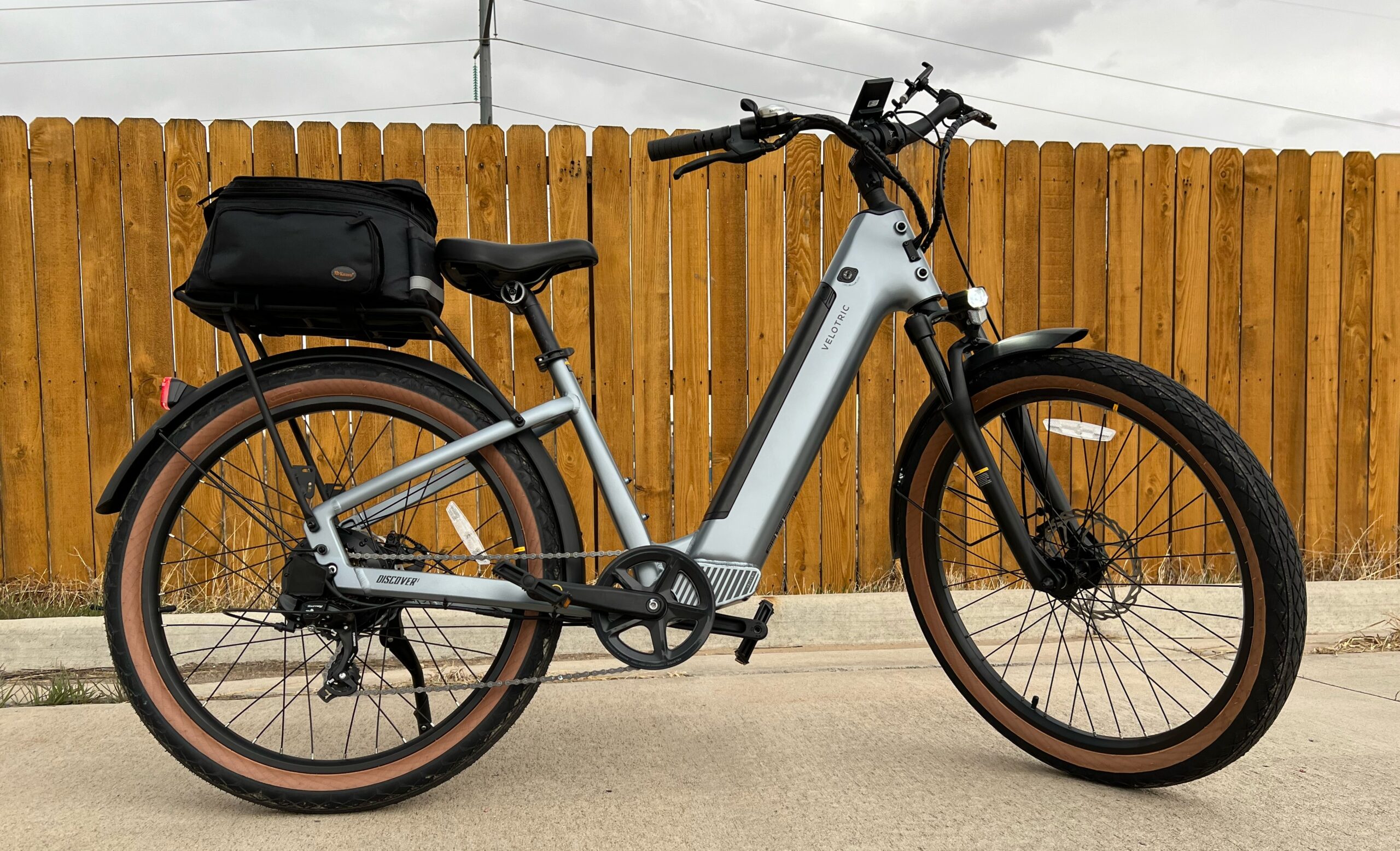
Rear Hub Motors are the most common eBike motors. For a variety of reasons:
- They are cheaper.
- They are easier to use on a wide variety of bikes (no special frame needed – they simply fit in the rear wheel).
- They can easily include a throttle, which – let’s face it: is a lot more fun.
Rear hub motors are generally cheaper and more fun.
How the Rear Hub Motors “Run”
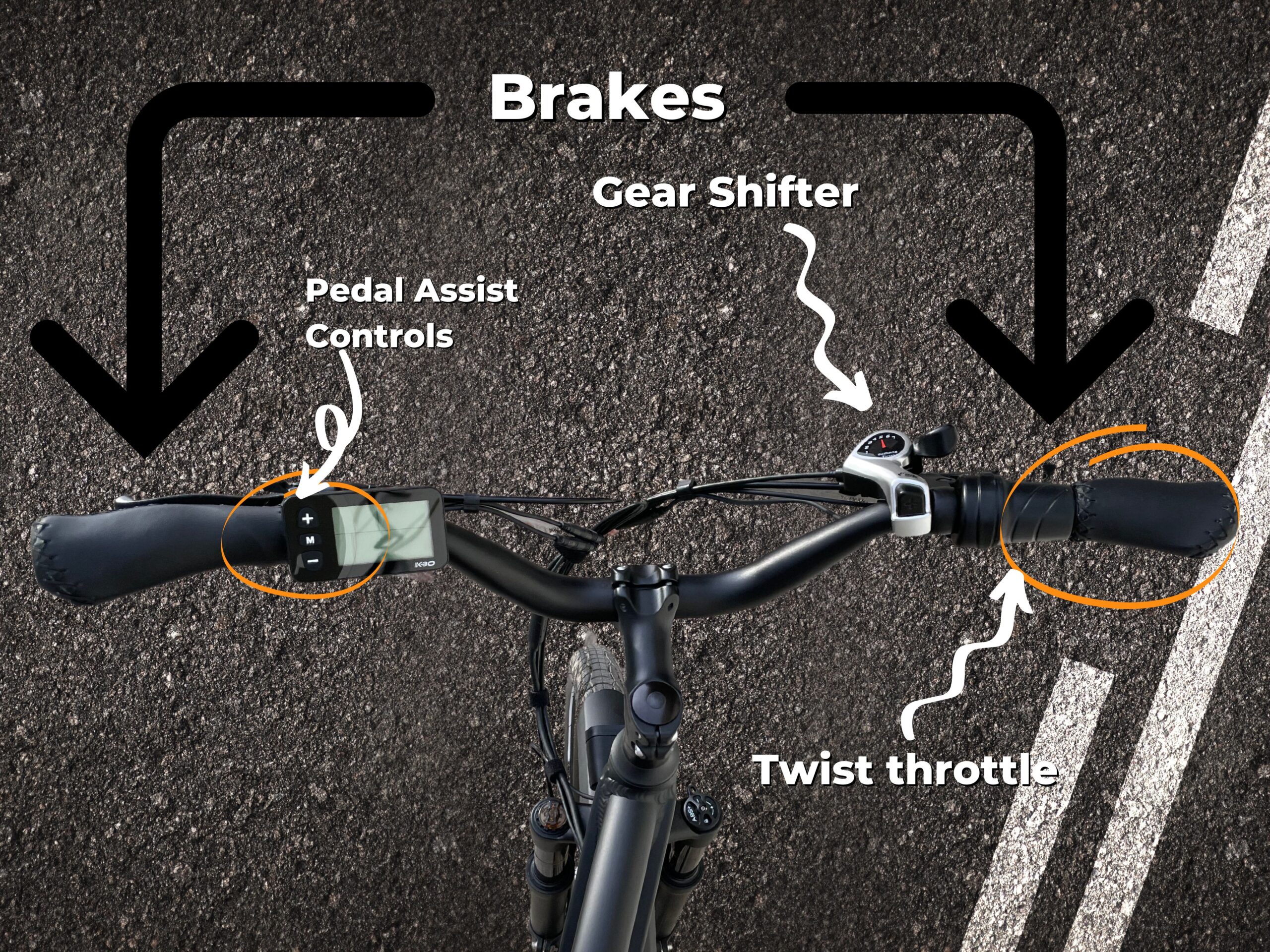
There are two ways to get rear-wheel hub motors to run:
- A Throttle (typically a half-twist throttle on the right handlebar or thumb throttle)
- A sensor (either cadence or torque) that tells the motor when you are pedaling.
Most Rear Hub Motors use cadence sensors to activate the motor, but they can also be “easier” to ride in that you don’t have to push on the pedals much to achieve maximum motor output at any pedal-assist level.
Torque Sensors vs. Cadence Sensors (The “Why Does My Bike Feel Weird?” Edition)
If you’ve ever hopped on two different e-bikes and wondered, “Why does this one feel like a trusty old friend while the other takes off like it’s late for work?”—yep, that’s the sensors talking.
Torque Sensors: The Mind-Reader
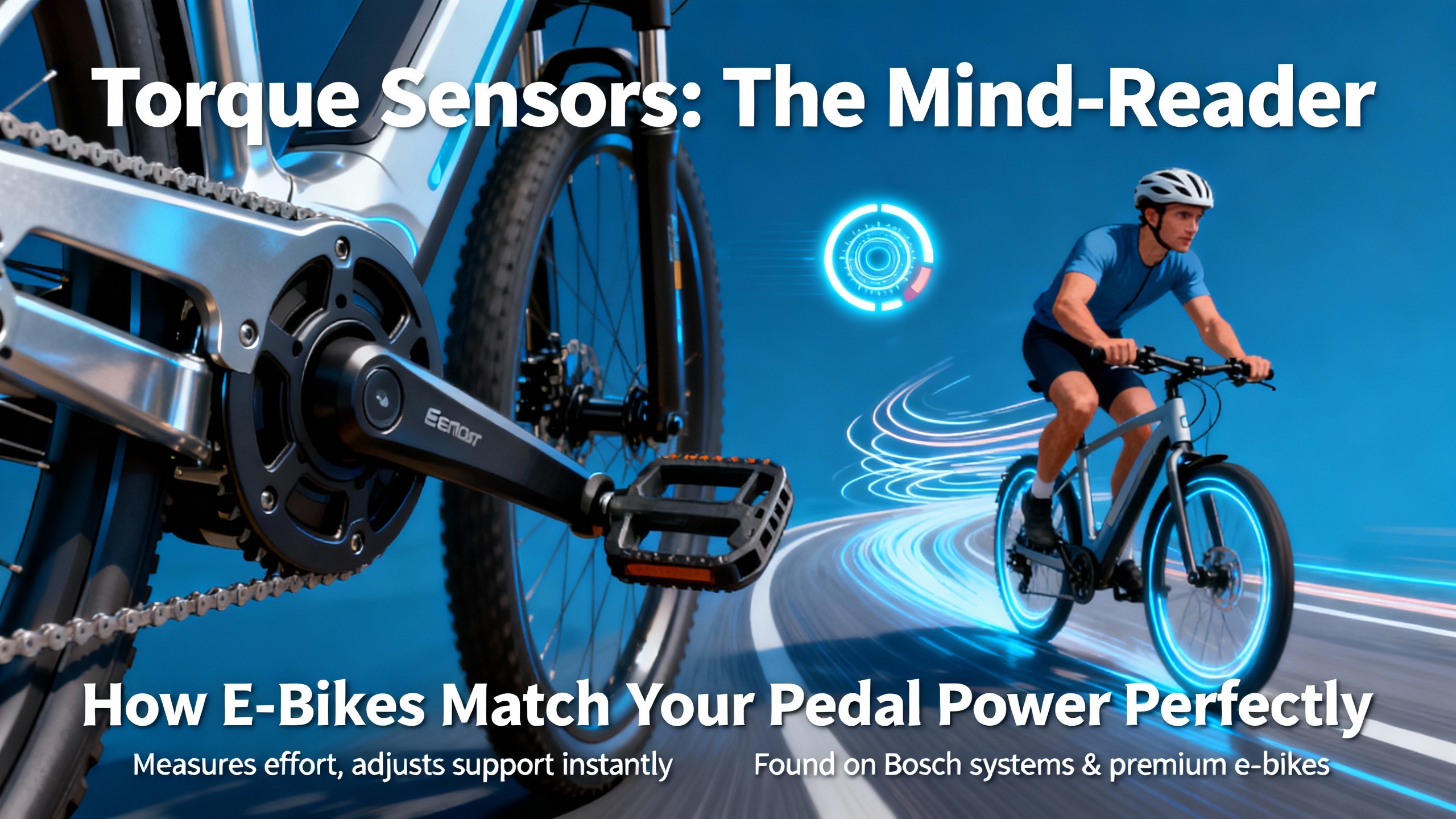
Torque sensors are basically the overachievers of the e-bike world. They measure how hard you’re pushing on the pedals and then give you motor support that matches your effort. Push harder, get more juice. Ease up, it chills out.
The result? A super smooth, natural ride that feels like you’ve suddenly become that person who does peloton classes at 5 a.m. This is the technology you’ll find on the nicer setups—think Bosch systems and the pricier e-bikes we drool over. It’s intuitive, responsive, and just makes riding feel… right.
Cadence Sensors: The Chill Cruise Control
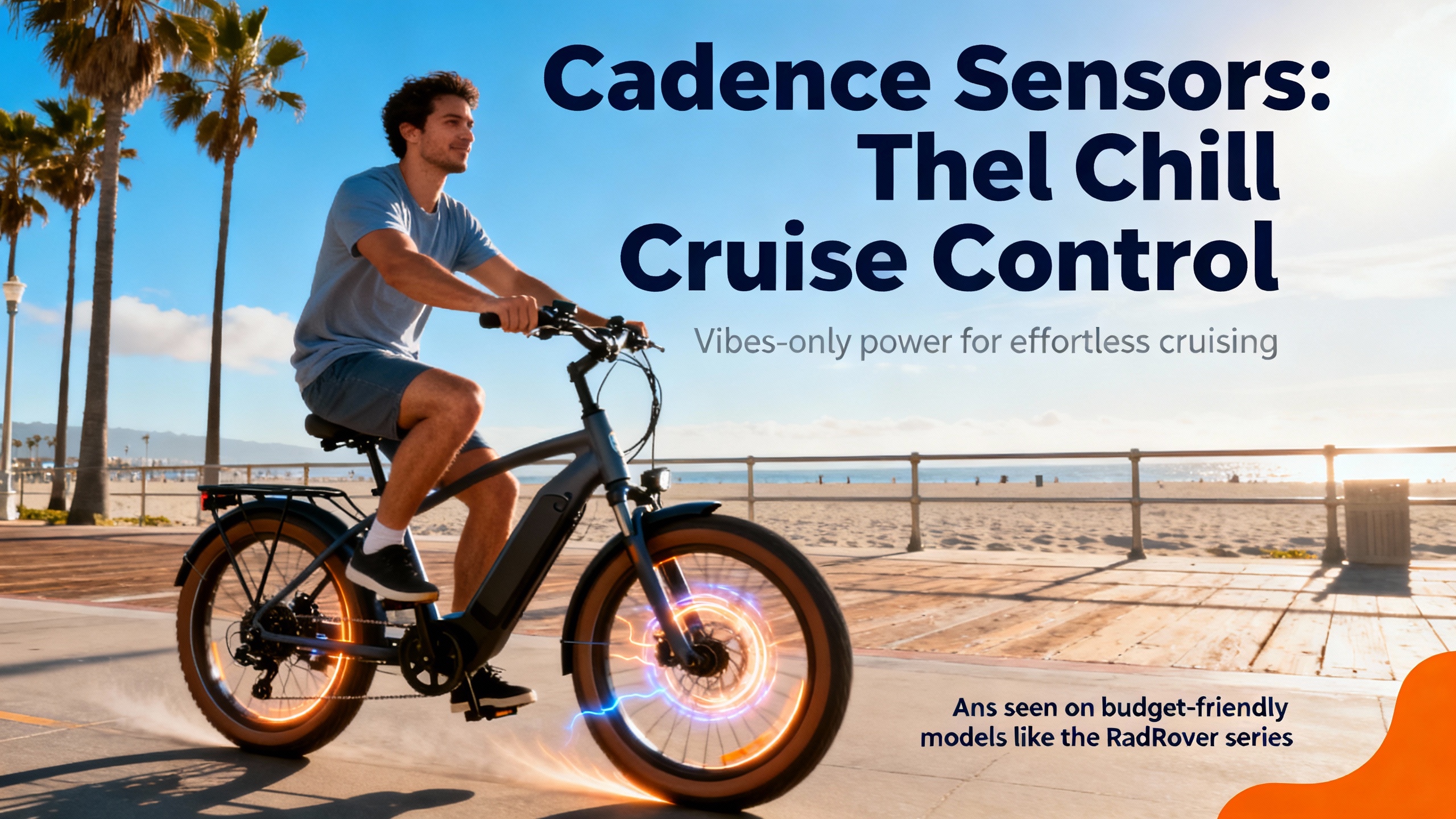
Cadence sensors take a slightly more “hey man, vibes only” approach. As soon as your pedals start spinning—even lightly—they kick on the power. They don’t care how hard you’re working; they’re here to party.
This setup gives you more of an “on/off” surge of power, which is totally fine (and honestly kind of fun) for casual cruising, beach-boardwalk rides, or when you simply want the bike to do most of the heavy lifting. You’ll see these a lot on budget-friendly models like the RadRover series.
Which One Should You Get?
It really depends on your style:
- Want that classic, I-am-one-with-the-bike feel? Torque sensor. You’ll love it.
- Want easy, no-thinking-required power? Cadence sensor is your buddy.
Neither is wrong—just different flavors of awesome.
What a cadence sensor feels like as a rider
This feels like you trigger a switch that pushes the bike forward. Think of it as pushing the throttle a little bit with each pedal turn. That’s because most rear hub motors use magnets near the pedals that turn on the rear hub drive ebike motor when pedals. So, you can sometimes feel the point when battery power is sent to the rear hub.
As they deliver boost through the rear axle (AKA the back wheel) and not the drivetrain (AKA the chains), they also work fine with cheaper 7-speed drivetrains you see on lots of inexpensive hub-motor bikes (though these drivetrains can still present their own issues!)
When I ride a rear hub motor bike
In fact, I don’t typically change gears very frequently when riding a rear-wheel drive hub motor. Nowhere close to as often as I change the gears driving a mid-drive motor, that’s for sure!
Lastly, hub drive systems easily allow the use of a throttle, hence the reason many Class 2 bikes are hub drive.
For more information on the difference between different classes of motors, see our guide to different ebike classifications.
Rear Hub Motor: The Bad News
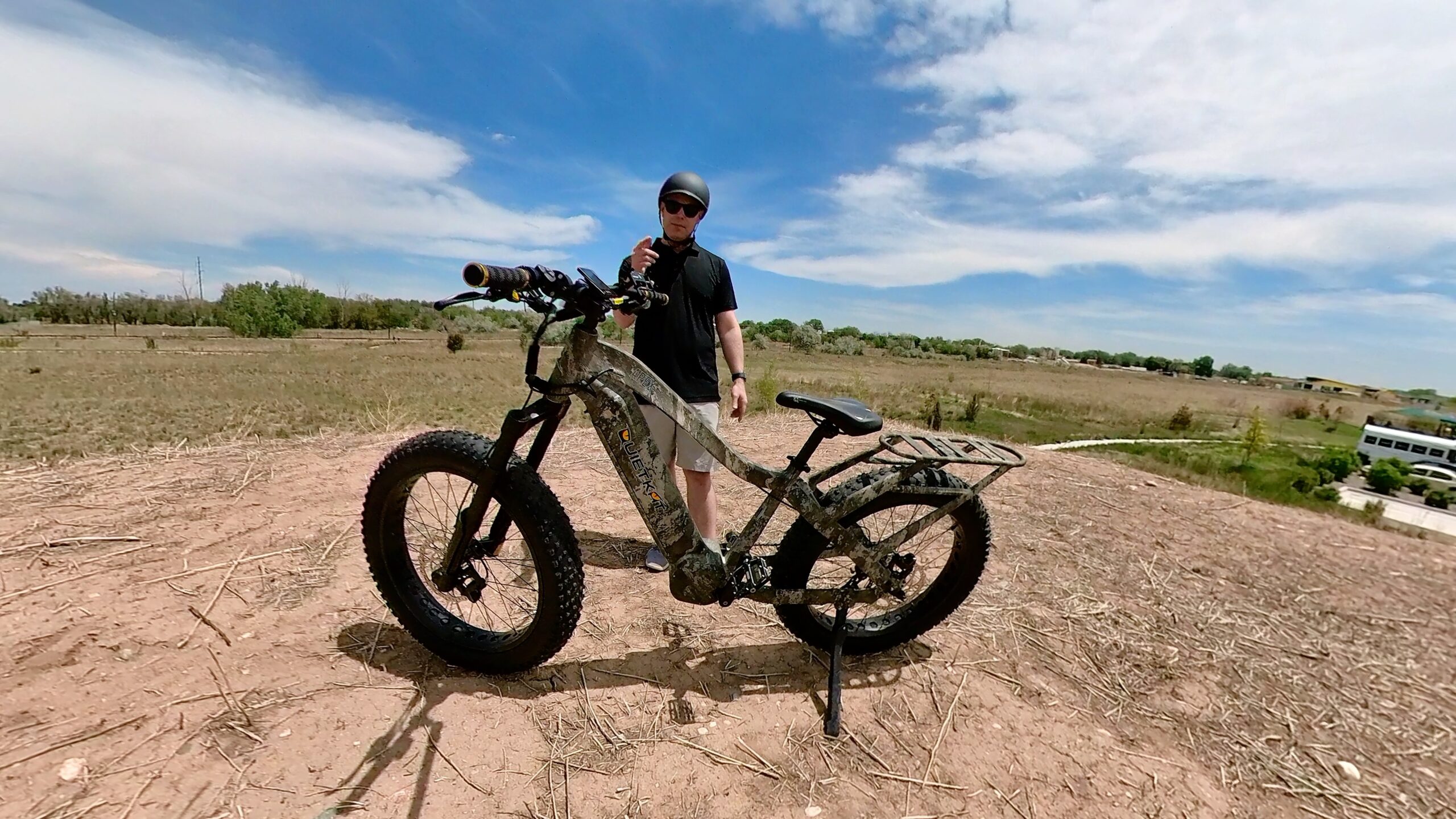
The biggest bad news bears about a rear hub motor is longevity.
As a rear-wheel hub motor runs power directly to the axle (the rear wheel) rather than taking advantage of the drivetrain (the chain), they are often running harder to supply the same level of assistance as a comparable mid-drive. Hence slightly lower battery life (for equivalent power systems) and more wear and tear on the motor.
This also applies to the lack of a torque sensor, which allows mid-drive systems to modulate power more effectively. These harder-working motors will also typically not last as long as a mid-drive. That “instant power” delivery can feel like the bike is going faster than you’re trying to go- kind of analogous to a car with an overly sensitive gas pedal.
The ride experience
While some view this as a con – especially more seasoned riders – the eBike experience feels less natural. However, I find the natural to be boring and that’s why things like roller coasters are invented.
But if you are a bicycle purist, you will hate the feel of a rear hub motor. It feels unnatural, in the most fun way possible.
The only caveat to this is top speed one a very high-end bike. I was able to reach almost 30 MPH going uphill in the QuietKat Apex. Granted, it is almost $6,000 – but it was a lot of fun going that fast. I did have to use the gears, like I would in a car – but it was fun!
Mid-drive motor – The good stuff
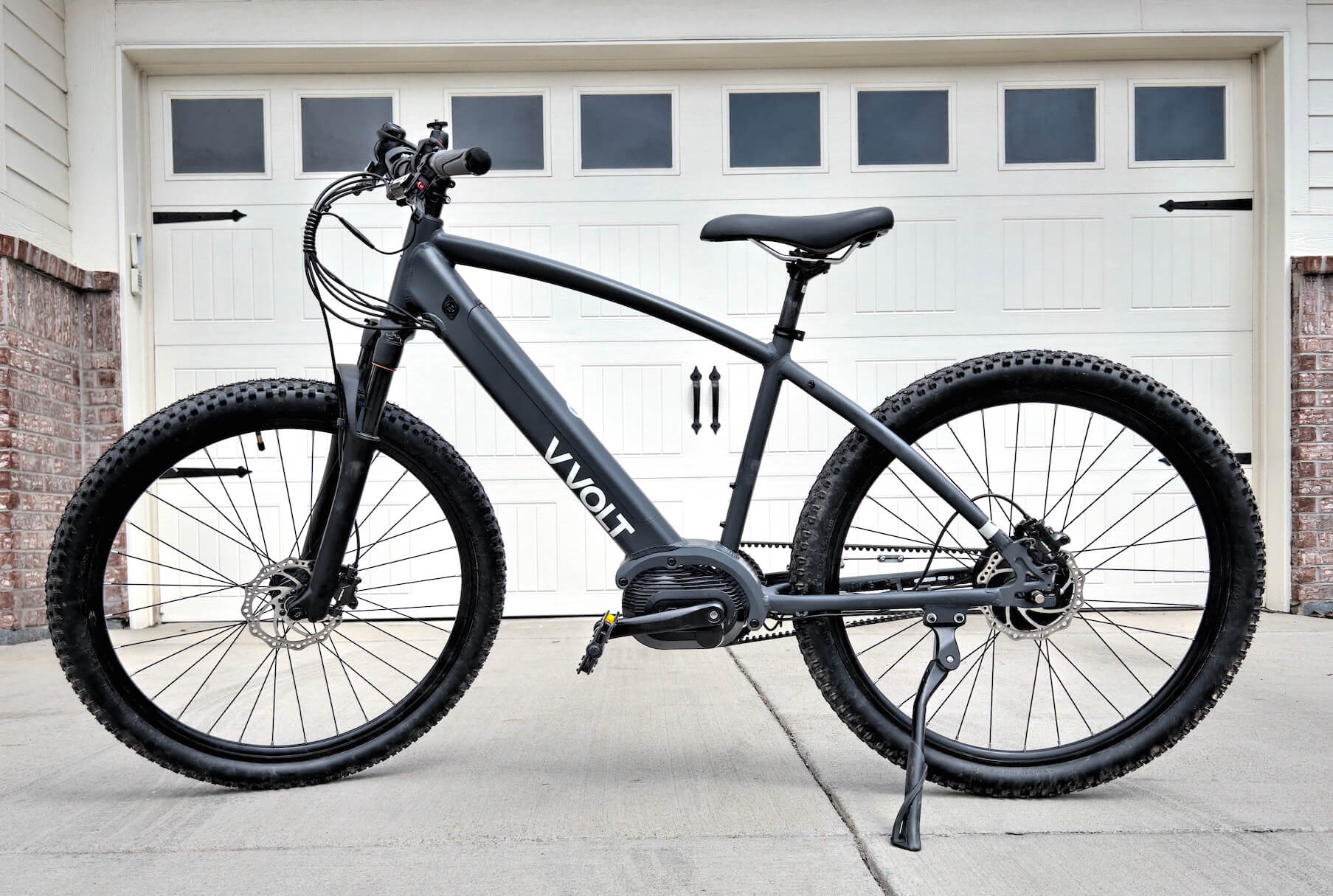
The first thing a mid-drive offers is more torque. Most mid drives produce 60-100nm of max torque, compared to the 30-50nm common on rear hub drives (some offer more like the RadRover 6 has 68 nn of torque).
What is torque?
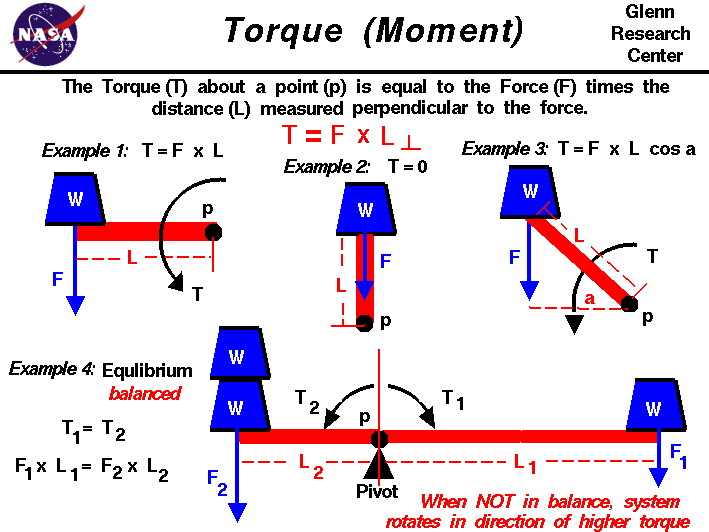
I had no clue until I studied this with eBikes.
Many eBike assembly instructions describe how many newton meters of torque you’ll need to apply in specific regions of assembly.
However, Torque is even more important when it comes to the motor’s power when riding.
The definition of torque is the amount of a rotational force. When tightening a screw, that’s helpful – but it’s also helpful when thinking about how much rotational force can happen with a wheel.
If horsepower is how quickly work can be delivered, then torque is how much work it can do.
Torque differs from horsepower because it describes how much an engine can do, while horsepower defines how fast that work can happen. This means that sometimes people say “torque” in everyday language as “oomph”. So now you know: when someone tells you an electric bike has lots of torque, they’re saying it has lots of power – and you can feel it!
What does that mean for riding a bike?
Bikes with higher torque make them quicker off the line, and able to climb more effectively for the rated motor power. You’ll “feel” more of the power.
If you’ve driven many eBikes you will only feel the difference when climbing steep hill and with extra weight (like a kiddo or cargo).
Can a lower watt mid-drive electric bike out-perform a higher watt rear hub bike?
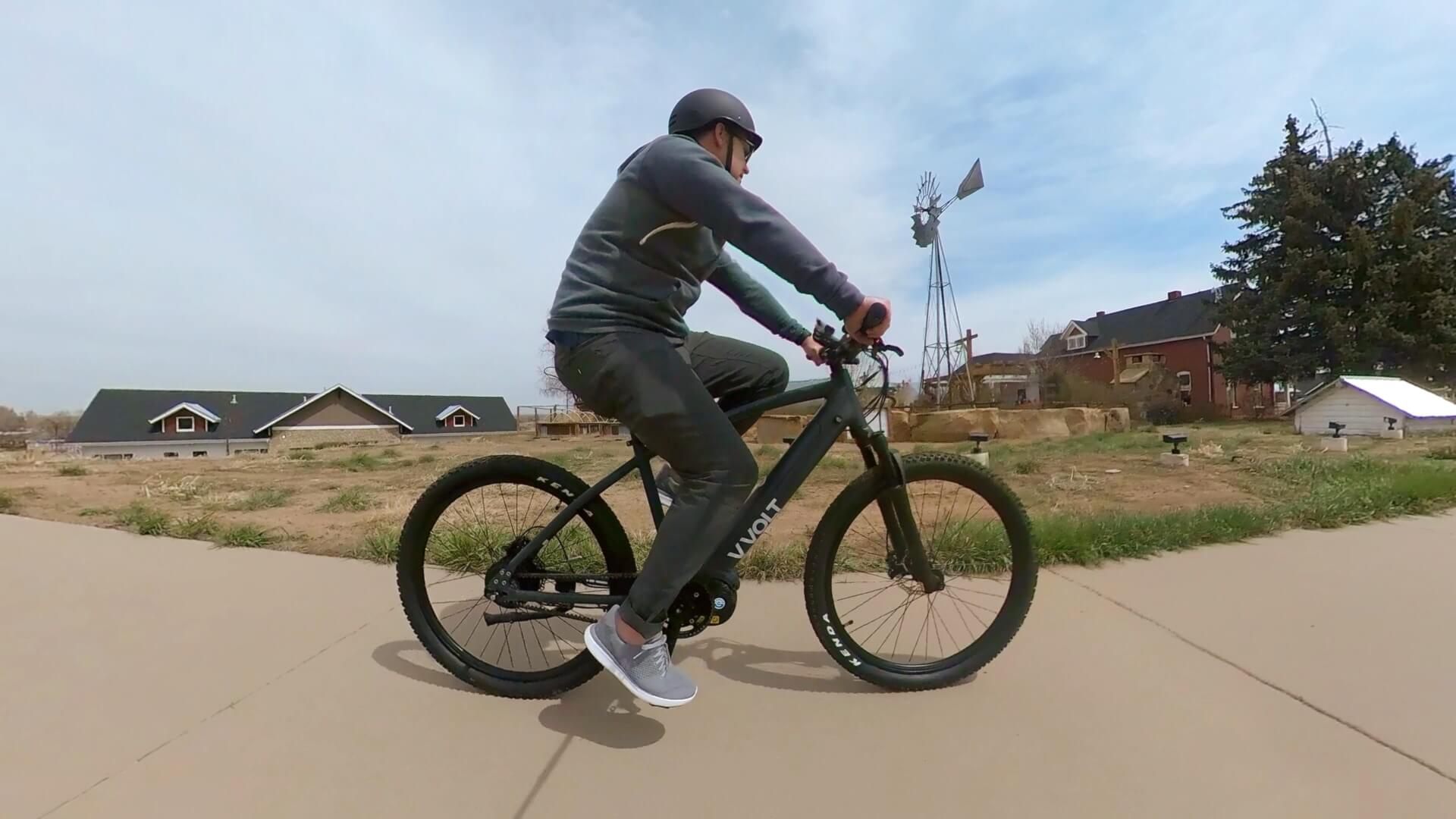
You bet it can!
Combined with the gear reduction offered by the drivetrain (shifting gears, like a car does), mid-drive motors with 250w nominal power can outperform hub motors with 500-750w power.
It’s also worth mentioning that most mid-drives are rated at 250w nominal power to conform with European Union regulations, and lots of them can put out peak power in the 500+w range.
For example, one motor I tested delivers something like 550w peak power to accompany the 80nm max torque.
The combo of torque, cadence and speed sensors in mid-drives allows the motor to respond in a more “natural” way to rider input.
What riding a mid-drive feels like
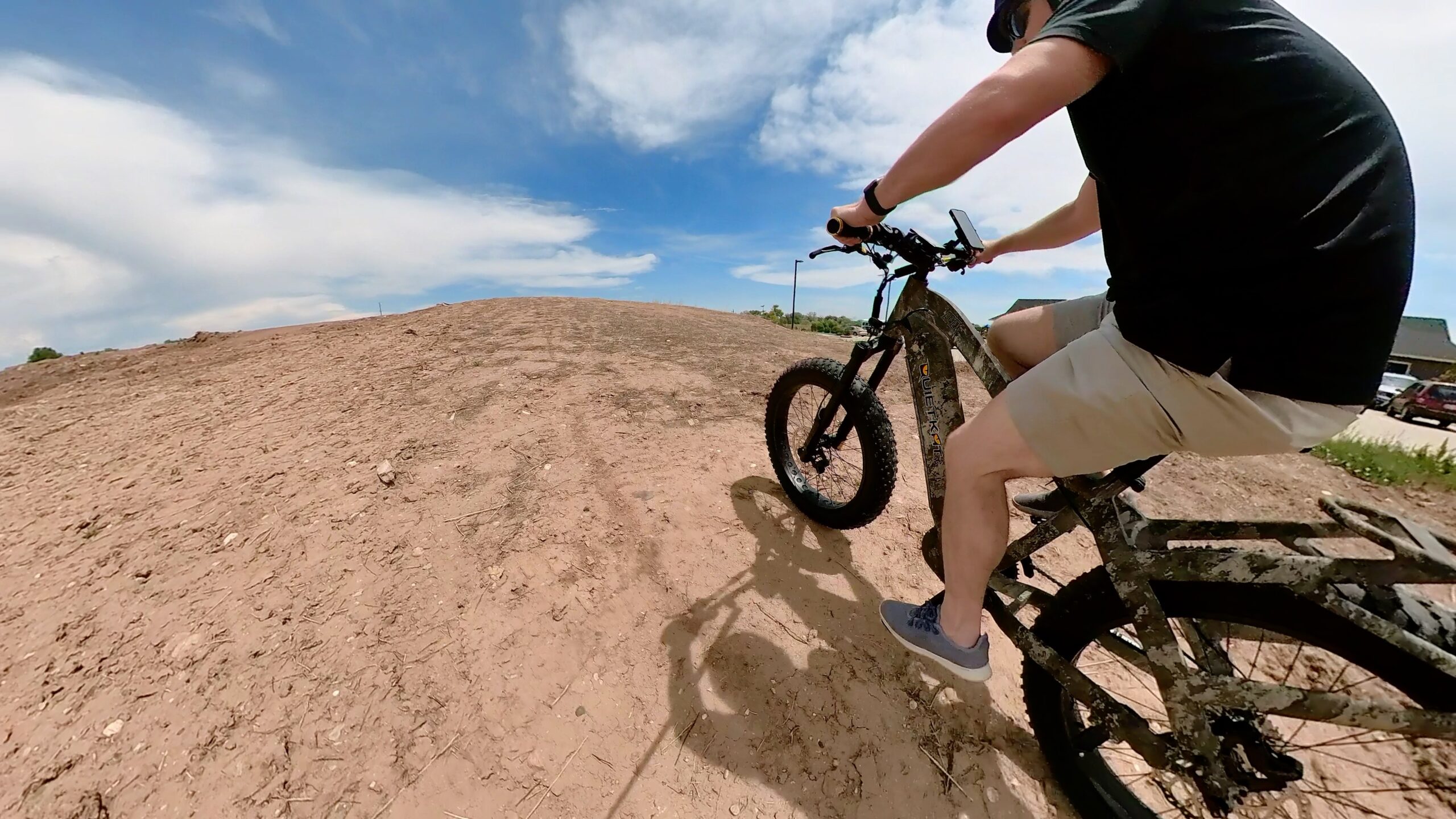
I tell folks that riding a mid-drive feels like you just have super-powered legs, while with hub drives you feel like you’re activating a motor.
The responsive power delivery allows the motor to run at lower median power outputs, essentially not running as hard as a hub motor, making for more motor longevity. This is over the span of tens of thousands of miles, but in tandem with the generally higher quality builds of mid-drives it makes them built to last in a way that most hub drives can’t touch.
A more natural feeling – but more expensive
Mid-drive motors offer a more natural feel when pedaling, and they last longer than rear-hub motors. However, they are more expensive than rear-hub motors. Rear-hub motors are cheaper and more fun, but they don’t last as long as mid-drive motors.
Mid-drive Motors: The bad stuff
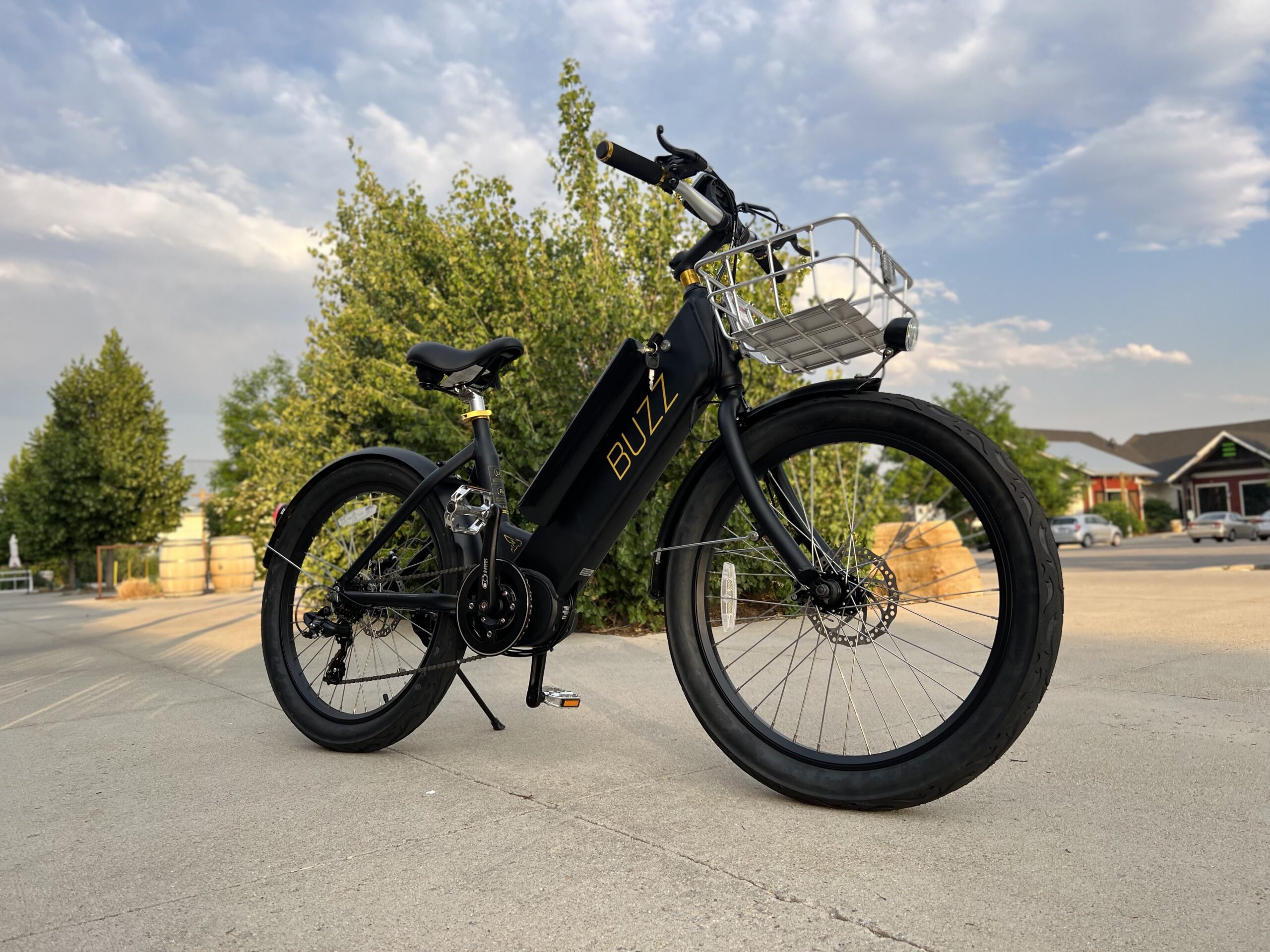
Price. They’re just more expensive and require dedicated frames, plus they need a better-quality drivetrain to handle the power loads running through the belt/chain and gears (internal or external)
In other words, you can’t just put a mid-drive motor on any bike, like can most rear-hub motors. The frame has to be specifically designed to handle it. That’s why you can spot a Mid-Drive motor in a line-up. They all have a larger area around the pedal.
If the area around the pedals in the bike frame is much larger than most bikes – you can almost 100% bet that it is a mid-drive e-bike.
If there is a cylindrical part in between the bike spokes it’s almost 100% one of the rear hub motor electric bikes.
Another bad part: the chain or belt
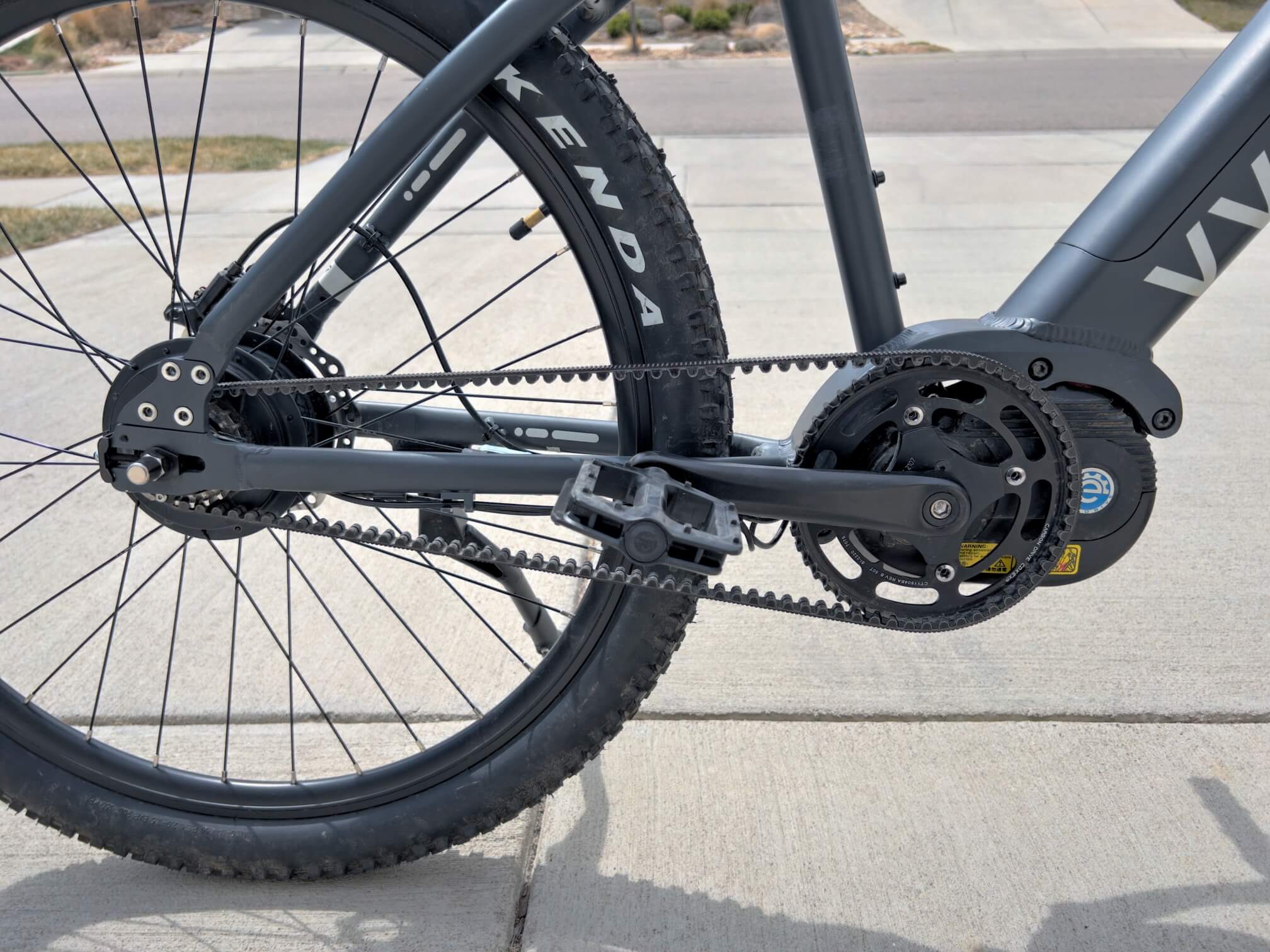
All mid-drive motors need the chain to deliver more power to the rear wheels. If the chain breaks, then you can’t operate the bike (unless you travel with a spare).
However, with a rear hub drive electric bicycle, if your chain brakes, just let the electric motor do the work for you. It doesn’t need the chain to operate and you can simply use the throttle (however, you will be limited to the range of your electric bike).
Battery Life and Maintenance
Battery performance is a key consideration when choosing between a mid-drive and a rear hub motor. Mid-drive motors are generally more efficient as they make better use of the battery because they work in harmony with the bike’s gears.
This can lead to longer battery life per charge. They also tend to place less stress on the battery by delivering power more gradually. Rear hub motors, while often less efficient, are typically easier to maintain.
Since they operate independently of the bike’s gears, there’s less overall wear on the drivetrain components. This can mean less maintenance in terms of chain and gear replacements. Routine maintenance includes regular checks and proper charging practices.
Keep the battery’s charge between 20%-80% to maximize lifespan. Cleaning the battery terminals and ensuring the battery remains at optimal temperature (between 0°C to 20°C) can also help in maintaining its health.
Battery Safety and Regulations
Lithium-ion battery safety has been a growing concern in the e-bike industry, heightened by incidents of overheating and fire hazards, particularly with lower-quality batteries.
In 2024, leading e-bike manufacturer Giant Manufacturing reported zero instances of battery issues, underscoring the importance of quality in battery production.
This focus on safety has led major cities like New York and San Francisco to implement regulations requiring UL safety certifications for all electric mobility devices sold.
These measures aim to ensure that e-bikes remain a safe choice for riders, reducing the risk associated with inferior battery products. With increased regulations and quality assurance standards, e-bikes can continue their rise as a safe, sustainable transportation option.
Rear Hub or Mid Drive: How does this impact the rider?
How this all relates to the rider? We’ve found two distinct users for whom it makes a big difference.
Who Rear Wheel Hub Motors are best for
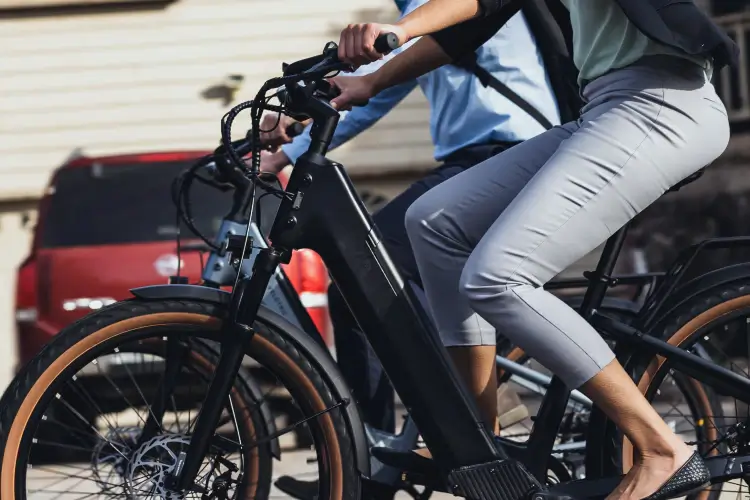
People who just want to have an easy time getting around and don’t have major hills or long-distance rides should get a rear hub drive. It’s less expensive and a great basic solution. This also pertain to people that just want a super fun bike to take to breweries and don’t take riding a bike too seriously.
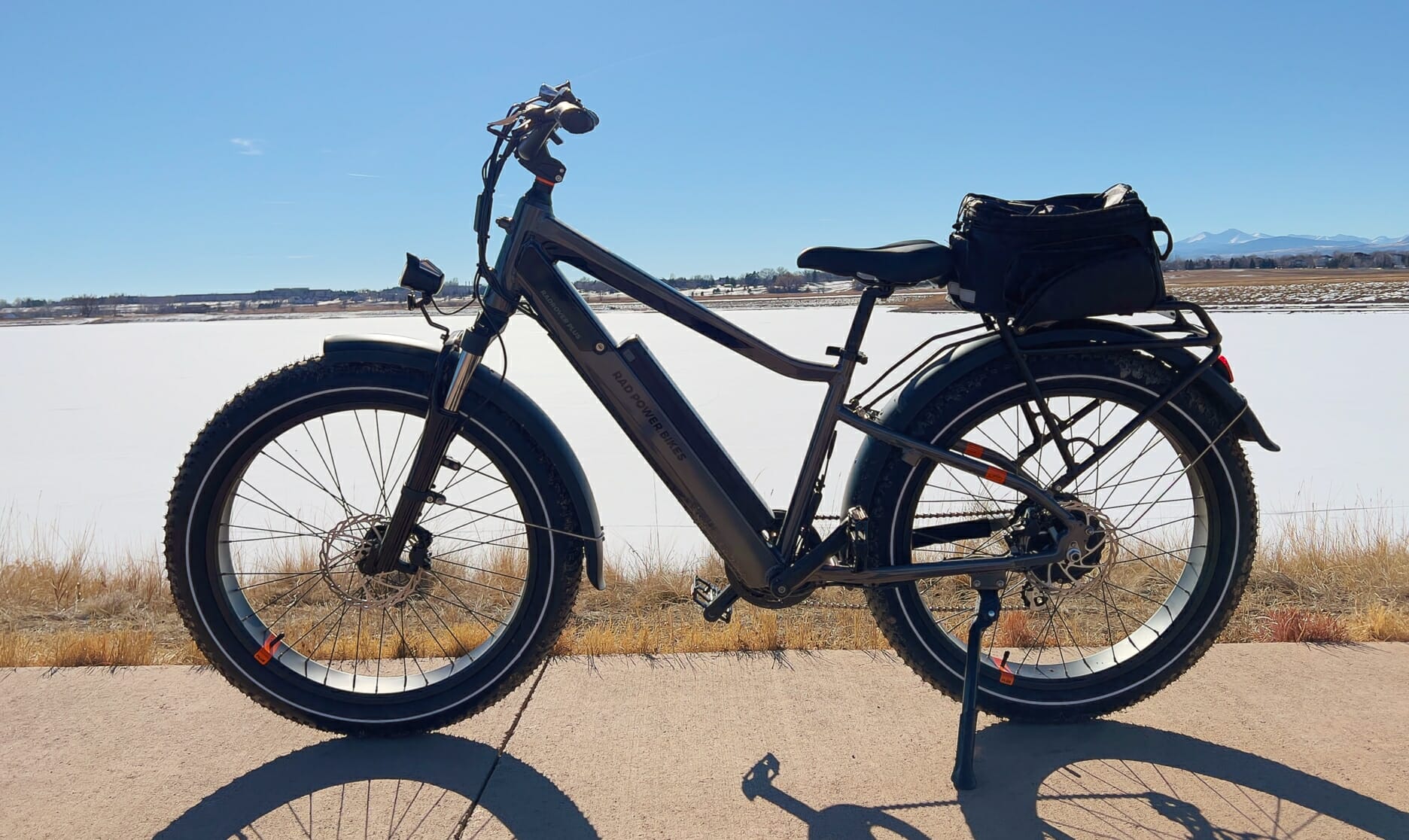
Why do all bike people take bicycle riding so seriously? … Seriously? This is supposed to be fun, right?!
Who should look at a mid-drive bike?
If you are a traditional bicycle “pursuit” then don’t even look bikes with rear hub drive motors – you won’t like it. There’s a chance you MIGHT like the mid-hub motor – it’s more like a traditional bike.

Long-time riders often feel like hub drives are not responsive and “jerky,” unlike mid-drives that react to rider effort as measured by torque at the cranks.
These folks are often dissatisfied with the ride of a hub motor and end up with a mid-drive (assuming they can afford it).
A perfect example: My mother and father-in-law
My father-in-law doesn’t ride his bike a ton of miles, but he rides it almost every day. He rides it to grab the mail, to our house (2 blocks away), and occasionally to the breweries a couple of miles away. He likes the ease of a rear-hub drive to just to get from place to place. He likes the speed and doesn’t touch the bike’s gears hardly ever.
He also is super comfortable going 20+ MPH and thinks of his electric bike as a lower cost, lower hassle motorcycle. He rides his Himiway Escape or KBO Breeze very often.
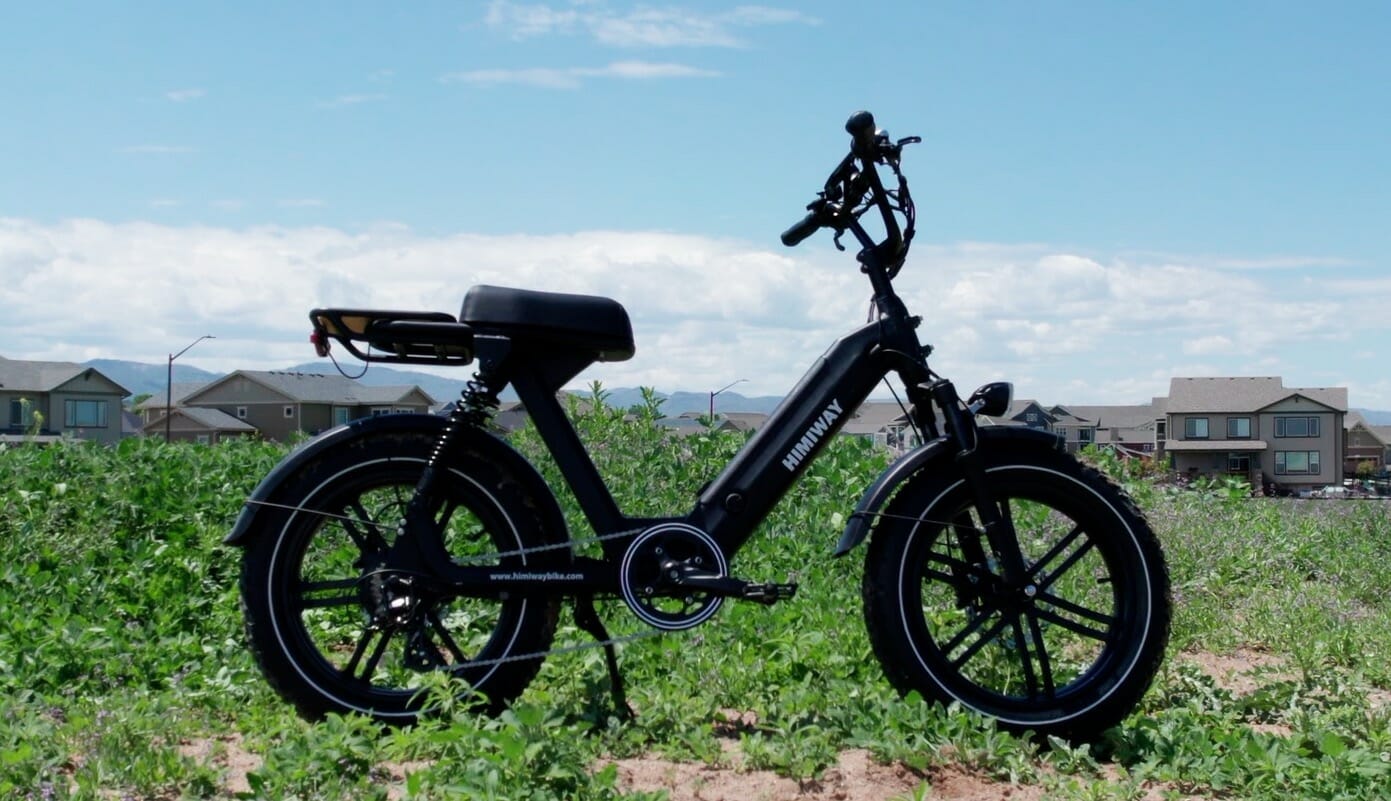
However, my mother-in-law would be more suited to a mid-drive motor bicycle. She currently rides a rear hub motor bike but is probably a better fit for mid drive electric bikes.
Here’s why: she wants to feel in control. She hates the very unnatural pedaling cadence sensors that make for a jerky feel.
I know I mentioned that many mid-drive electric bike options are more expensive, but I recently reviewed the Buzz Cerana that would be a perfect fit for her. The motor is in the middle of the bike and she would feel completely in control.
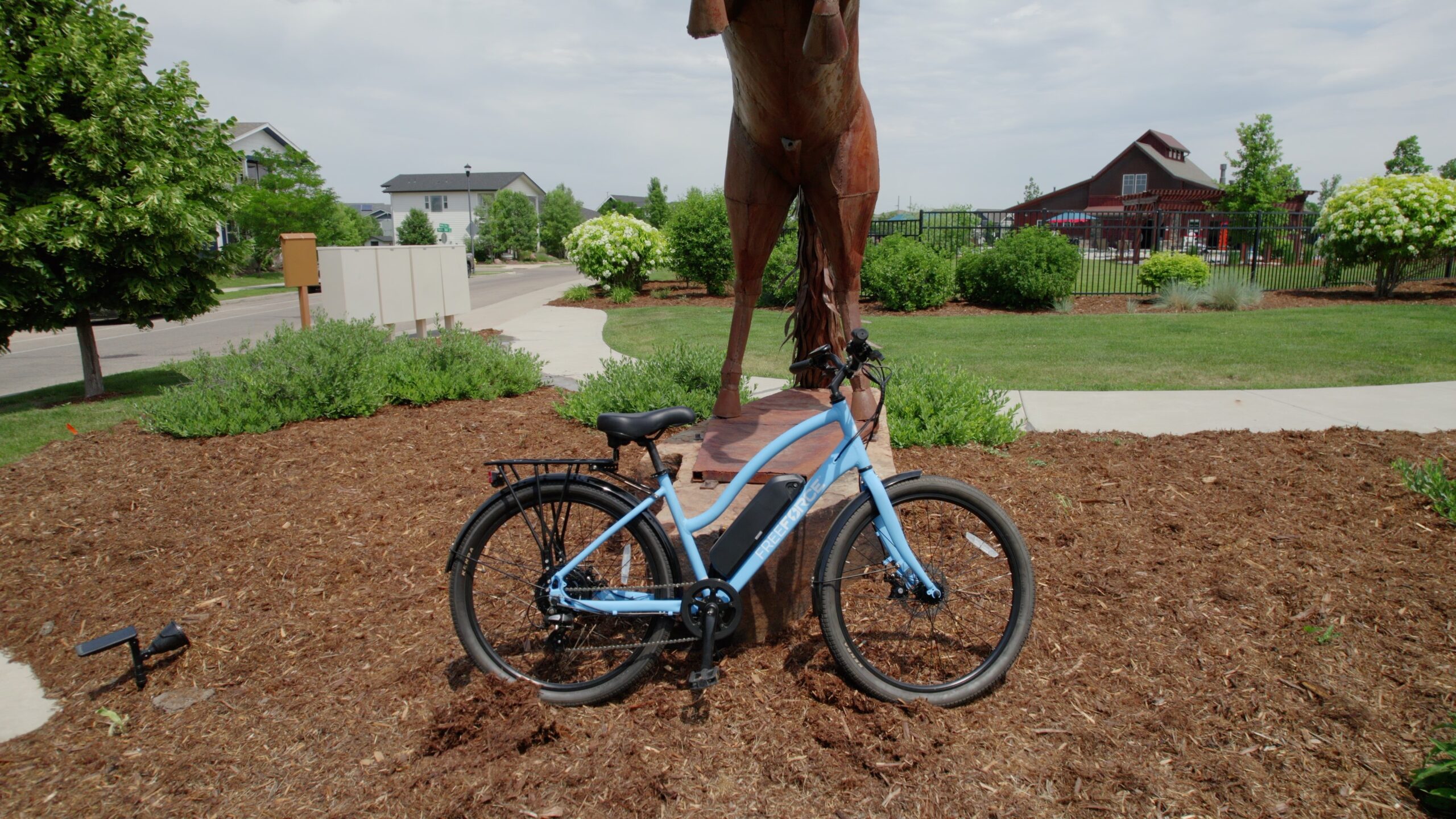
The funny thing with these different motor types is that “performance advantages” are a bit relative.
I’d say a mid-drive ebike like the Queitkat Apex are higher performance on the extreme end of needing performance. But I’d say the Cerana is better on the lower end of performance.
In the end, everyone wants something to help with hill climbing – especially steep hills (something BOTH mid drive ebikes and hub drive electric bikes do incredible well) and reduce the overall pedaling effort.
It’s the fringe cases, on both sides that make a mid-drive bike the better solution and the hub drive bike motors the best for a vast majority of riders.
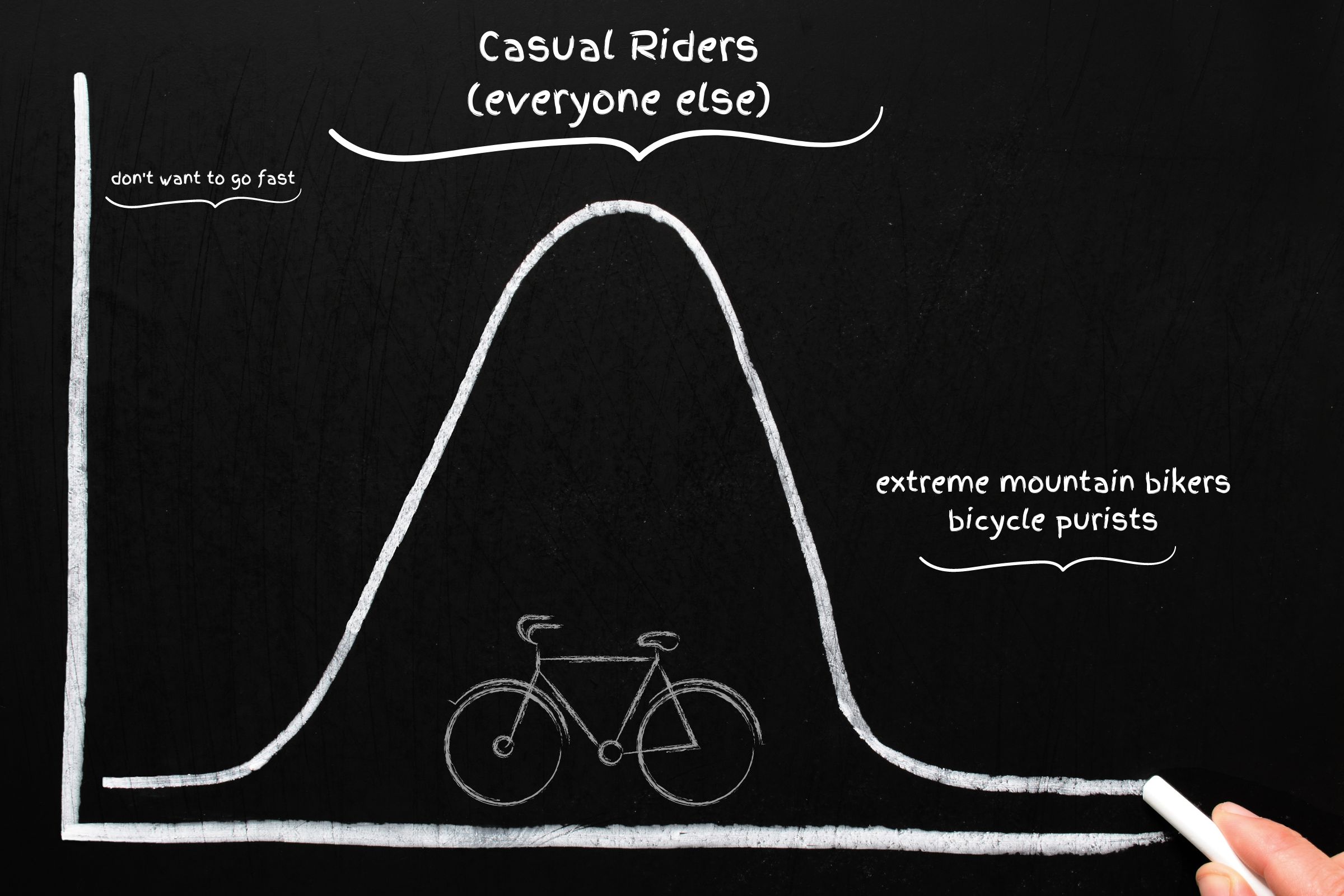
The reality of it is that most riders don’t run their motors hard enough to really see some of these differences, or don’t have decades of riding and thousands of miles influencing their ideas of what a good ebike should be. Any ebike that will help people reduce auto miles driven is preferable to not riding an ebike!
Rear-Hub Drive eBikes We Love
Most of the eBikes we’ve tested are Rear Hub Drive eBikes. As you’ll read in our ultimate eBike Guide, we recommend that you stick with a reputable manufacturer – and check out the best e-bike accessories.
The flagship RadRover gets a massive upgrade. From a brand new frame to the dual-screen Rad User Interface, this bike keeps the spirit of previous RadRovers and but innovates in all the right places.
- An incredible value
- A wide variety of products
- Owners love the product
- Comes with cool swag
- Not as well-known as other brands
Cost Analysis
When looking at costs, both up-front and long-term, there are notable differences between mid-drive and rear hub motor e-bikes. Mid-drive systems are typically more expensive due to complex designs and detailed engineering. This can result in higher initial costs.
However, their efficiency can lead to savings on battery replacements over time. Rear hub motors, generally more affordable, offer lower entry-level pricing with widespread availability across budget-friendly models.
Though they may require more frequent maintenance due to increased stress on the hub motor, they still present a viable, cost-effective option, especially for casual riders.
Popular models include the RadRover 6 for a balanced cost-to-performance ratio in rear hub variants, and models like the QuietKat Apex for mid-drive enthusiasts willing to invest for heightened performance and longevity. Comparing specs and intended use will provide more clarity in choosing the best economic fit.
Mid-Drive eBikes We Love
Of the 22+ eBikes we’ve tested, only 3 have been mid-drive electric bicycles. That shows you how rare they are.
Imagine you want to sneak up on an animal. You don't want a noisy ATV or offroad motorcycle, you need something quiet - like the QuietKat. Incredibly over-engineered to take whatever you can throw at it. Great, if that's something you need - but overkill if you want some light off-roading.
This ebike is simple, reliable and ride like a "true" high-quality bicycle. If you think most eBikes are a bit out of control and prefer an elegant option - check out the Sirius from Vvolt.
Talk about a bike that knows its audience. This eBike is the perfect mild-manner eBike for the person that wants to be 100% in control and take it easy.
Popular Brands and Models
Many reputable brands specialize in both mid-drive and rear hub motor e-bikes, offering a diverse range of models that cater to various needs. Bosch e-bike systems are well-regarded for their reliable performance and are frequently found in mid-drive bikes praised for their torque and natural cycling feel.
Brands like Trek and Haibike make use of these systems, showcasing quality in design and performance. On the rear hub motor front, Rad Power Bikes remain a common choice, well known for providing reliable and budget-friendly options such as the RadRover and RadCity.
Similarly, Aventon e-bikes are recognized for sleek designs with plenty of power for everyday commuting needs. Each brand and model brings something unique to the table.
Whether it’s advanced battery technology or intuitive controls, it’s always a smart move to test-ride a few models to experience firsthand the sensation of both motor types. These insights will guide you towards finding an e-bike that best suits your style and requirements.
E-bike Market Growth
The global e-bike market continues to expand rapidly, reaching a valuation of $13.98 billion in 2023. This growth path is projected to sustain a compound annual growth rate (CAGR) of 9.48%, with the market size anticipated to reach $34.61 billion by 2033.
This surge in demand highlights a global shift toward more sustainable and eco-friendly transportation options. As urban areas become more congested and environmental concerns grow, e-bikes offer an efficient and appealing alternative for commuters and recreational riders, too.
Interest in e-bikes isn’t confined to urban buyers; suburban and rural demographics are also embracing this technology, appreciating its practicality and environmental benefits.
With continuous innovations improving their performance and affordability, e-bikes are poised to become even more integral to transportation systems worldwide.
Final Thoughts
Mid-drive electric bikes offer a more natural feel for the rider, while rear-hub drive electric bikes are less expensive and better suited for people who just want an easy time getting around. Both motor types have their pros and cons, so it’s important to consider what you need in an ebike before making a purchase.

